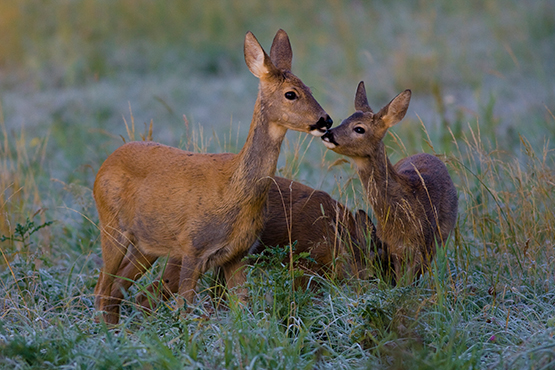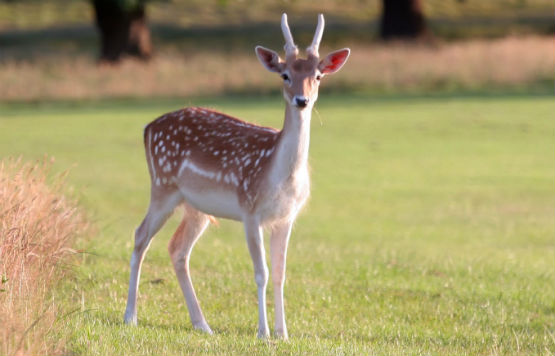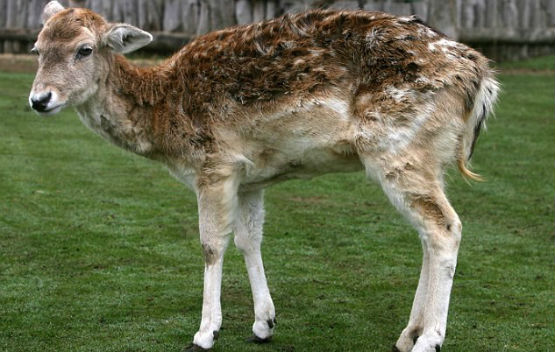Some bullet points to help you age deer.

The ability to estimate the age of a deer is useful both when selecting deer for culling in the field and for the purposes of record keeping, and is therefore a crucial requirement for those involved in deer management. The aim of this simple guide is to suggest indicators which may help both during the selection process and for confirmation after culling.
Accuracy
It is not always possible, and rarely necessary, to age wild deer precisely. Generally speaking, when managing a deer population, it is sufficient to be able to simply identify four main age classes:
· young (< 1 year)
· yearling (>1 year and <2)
· adult (2 years +)
· old (7 years +)
Perhaps the most commonly used method of determining an impression of age is through tooth wear and eruption. Via this method it is possible to gain an impression of the age (in years) of an adult deer, however it is not an ‘exact science’ added to which, from the point of view of managing wild populations there is little to be gained from knowing whether an adult is within one or two years of a specific age.
Of course, examining tooth wear requires that the animal has already been shot and therefore serves the purpose of record keeping only. Ageing the deer in the field prior to pulling the trigger is therefore, arguably a more important skill to acquire.
The appearance and behaviour of live deer can give clues as to their age, even from some distance away.
Age assessment at a distance:

(Above: On some occassions ageing deer is a relatively easy task. Here we have a yearling Fallow buck)
Age assessment is more accurate if based on a combination of features rather than relying on one characteristic in isolation. It is also easier when glassing groups of animals, since it is possible to compare an individual animal with others in the group. For this reason and others, it is usually possible to be more accurate with the larger herding species of deer.
However, which ever species you are glassing a good pair of binoculars is absolutely essential. Here are a few points to look out for.
Size
· Young - smaller, petite looking
· Adult - Get bigger as they mature but can appear smaller again in old age.
Angle of haunches
· Young - haunches very angular
· Adult - haunches rounder and more muscular
Shape of head
· Young - Tend to have relatively big eyes and ears. Face is usually short and stubby
· Adult - Tend to have longer faces, may be grey with old age
Antlers
· Young - simple knobs or spikes
· Adult - developed antlers
Neck
· Young - appear longer and thinner
· Adult - appears shorter and thicker
Legs
· Young - Depth of chest seems less than length of legs making them appear ‘leggy’
· Adult - Greater depth of chest, may seem more than length of legs, especially males of larger species
Of courses as well as the deer’s appearance, its behaviour also provides a clue to the animals age and as with human’s is an indication of age.
General body

(Above: At the age of 22yrs this deer named 'Holly' was thought to be one of the oldest park deer in the country)
· Young - Move around more, playful and generally curious. Dependant youngsters often stay close to their mother.
· Adult - More deliberate, purposeful and relaxed - unless disturbed
Hierarchy
· Young - Subservient to more mature animals
· Adult - Position depends on individual deer, dominant animals and herd leaders are usually mature but not necessarily old
Reaction to danger
· Young - May react to danger and then ignore it. May approach something they are suspicious of, run but then return
· Adult - Very alert to danger – either will run quickly or frieze and watch for a time and then react if their hunch is confirmed
Feeding
· Young - Usually first to break from cover to feed areas often without much caution
· Adult - Tend to hang back in cover and come out later than the young.
An excellent place to develop experience and gain confidence in this area, is to visit a deer park and observe deer up close. Parks with good numbers of deer are a great place to get close to deer and to study age, body shape characteristics and behaviour.
Ageing deer in the field can be challenging, particularly with the smaller species i.e Roe, CWD and Muntjac deer. However, it is an important skillset for the stalker to develop, particularly in relation to females and the ethical need to avoid at all costs the shooting of mothers with dependant young.



















